-
Content count
11,664 -
Joined
-
Last visited
-
Days Won
265
Posts posted by steve
-
-
23 hours ago, Haribol said:So, my friends, a monk at the Krishna temple I attend mentioned that Buddhists believe in reincarnation, but not the soul. I got quiet, trying to figure out how that works. If there is not an individual soul that is unique to me and survives death, how can one be reincarnated?
One way to think about it is in distinguishing the concept of reincarnation from rebirth.
Reincarnation implies a permanent, self-sustaining entity, atman, that transmigrates from one incarnation to another.
Rebirth implies the coalescence of mental and physical aggregates, which arise as a result of karma and dependent origination, in a new form in the absence of an eternal soul.
I'm not saying one is right and one is wrong by any means, both are simply attempts to capture mystery in concepts and words.
I think rebirth is closer to what is described in Buddhism and reincarnation in Hindu systems.
23 hours ago, Haribol said:Further more, what are your takes on the soul: do we have an individual one that transcends death, or is it more like a drop of water that gets reabsorbed into the one ocean of conciousness or whatever it is?
In terms of the soul, I can't say that I have a personal take per se but I do resonate with the Bönpo concept of "bla" which is the closest thing in the system to the Western idea of soul. Truth is, it is not equivalent to soul but an interesting take on the basic idea.
If you have the time and patience, this video does a nice job of exploring it -
-
16 hours ago, Nungali said:Then if one is considering its nature 'from beyond' or 'apart from' using the mind (if that is what is meant ) then there must be a faculty beyond or apart from mind to consider it ? or are you saying mind considers itself (it doesnt look like you are saying that )
not from beyond or apart from, that's not what is meant.
the mind's nature is open and clear, the mind refers to all of the contents, perceptions, formations, activities, etc...
here's a brief excerpt from a Bön teaching that helps to distinguish -
As for recognizing the mind and the nature of mind:
Free of thoughts,
Becoming the base-of-all,
Neutral,
Possessing the potential to arise as anything without ceasing -
These four. The base-of-all is the nature of mind.
Recollected and aware,
Able to arise as anything whatsoever,
Liberated when released,
If allowed to settle, it mixes [with the base-of-all] -
These four. The intellect is the mind.
The method is that you hear this teaching, try to understand the meaning as best you can, then actualize this understanding in practice, traditionally in an extended and isolated retreat. Then the teacher checks your understanding and corrects or guides as needed.
Quote'' the nature of the mind and eventually identify with this as one's ultimate "self.'' so if mind is supposed to be identified as ultimate self , what is considering this non conceptual or intellectual definition ?
mind is not the ultimate self in these teachings
Quoteor maybe its just the syntax you chose or my misreading ?
probably, it's a tough subject to casually talk about, the vast majority of this process of "introduction to the nature of mind" is experiential practice, the metaphors, similes, examples, and descriptions are cognitive tools to help guide and correct when needed.
QuoteAre not the first two, products of the mind ?
yes
QuoteYes.
agree, I'll stop here
-
 1
1
-
-
13 hours ago, Nungali said:depending on the definition / concept of this 'mind' being talked about . . . and regarding that as the 'ultimate self ' .
This is perhaps the most important discernment in dzogchen.
What is the mind, what is its nature or essence, and how are the two distinguished and how do they relate to the self and ultimate reality?
The ways of teaching this can be complicated because different people require different things to "get it."
It's not a conceptual or intellectual definition because that is still the territory of the mind, which generally considers itself the only tool available for "understanding," not yet trusting anything outside of its realm, and yet not appreciating its own limitations when considering that which may be beyond its grasp.
So there are several methods, often relying on simile and metaphor as well as meditative methods.
This might be a topic for a different thread.
-
 3
3
-
-
-
15 hours ago, stirling said:Anyone who can show me at least one of your 9 souls gets a free lollipop.
My favorite -
-
 1
1
-
-
15 hours ago, Nungali said:Is there a (type of ) reverse Bonpo practice of this ? ... what I call 'active meditation ' .... a 'polarity' to the 'passive' meditation of 'stillness , silence , etc . I dont mean like in the first part of the above practice where the mind is encouraged to be active so as to move to the still state , but actually for the active part . Its a process in magick where one learns the magical correspondences so they 'bed in ' ( after a while into the 'unconscious ' ) so associations are 'automatic ' ; eg. Venus is similar to goddess Aphrodite , she rules love , her colors are the greens of nature, he incense is jasmine , her mandala , shape, number is .... etc .
So , when one goes into the Venus temple , even the mind is active and wandering each 'wander' ( focus on things around one ) is Venusian and 'throws one back' into the 'Venus vibe ' ... so the active wandering mind is bought back into the focus of the operation or meditation .
I am assuming something like exists due to the extravagant flamboyance of some rites , temples etc .

and assuming all this ^ is not just 'for show' but has inner significance regarding shape, sound, form, smell, color ?
Your image doesn't come through for me but there certainly is quite a bit of flamboyance in the Bön traditions.
The sounds, smells, costumes, iconography, stupas - lots of beautiful stuff (if you're into that sort of thing).
There are "nine ways" according to the old Bön tradition which I reference below. The first four are referred to as "causal vehicles" and are closely related to the shamanic roots of Bön and working with natural forces, elements, and energies and such. The 5th and 6th vehicles are related to the sutric paths (paths of renunciation, working with one's body, speech, and mind to reject samsara and strive towards liberation through prayer and mind training primarily). The 7th and 8th are the "tantric" vehicles. In this group we find many practices that I think are closest to what you are describing as "active meditation." Practices developing relationships with meditational deities (yidams) and elemental goddesses (dakinis) and becoming intimately familiar with all of their associations, visualizations, rituals, offerings, mudras, mantras, behaviors, etc...
When I think of and refer to "active meditation," it is in the context of the 9th vehicle. These are not "active" practices per se but are an application of dzogchen practice to every activity imaginable. Life becomes the practice. The core practice, as I think you know, is to recognize the nature of the mind and eventually identify with this as one's ultimate "self." In this context, active meditation ultimately means that one remains fully connected with the mind's pure essence throughout every waking, active, sleeping, dreaming, and dying moment. The practice is to first establish stability and continuity in formal practice on a cushion in a quiet place, undisturbed. When stable enough, we try to find that connection, and eventually some stability and continuity, while engaged in "righteous" and "supportive" practices like reciting mantras, circumambulating sacred sites, reciting prayers, and so on. When that is successful, we move on to more mundane daily activities like eating, cleaning, sex, and so on. Finally, we challenge ourselves with activities that would typically take us far out of that space - emotional and painful situations, jobs that involve creating harm (like butchery), fighting, and so forth.
These categories are not mutually exclusive. Most practitioners are engaging with practices from different vehicles at any given time in their life depending on what is needed and how they are progressing. Tantric practitioners also practice with the nature of mind but do not consider that enough in and of itself and engage in transformative practices with the assistance of meditational deities. The 9th vehicle focuses exclusively on the nature of mind and states that the results of all other vehicles are accessible when this practice is done properly.
The Nine Ways of Bön according to the Southern Treasures: (quoted from https://ravencypresswood.com/2013/02/24/what-are-the-nine-ways-of-bon/)
1. The Way of the Shen of Prediction: This Way includes divination, astrology, various rituals, and medical diagnosis.
2. The Way of the Shen of the Phenomenal World: This Way includes rituals dealing with communication with external forces such as rituals of protection, invocation, ransom of the soul and life-force, and of repelling negative or harmful energies.
3. The Way of the Shen of Manifestation: This Way includes venerating a deity or master and then applying mantra and mudras in order to accomplish a goal such as requesting assistance from natural energies.
4. The Way of the Shen of Existence: This Way is primarily focused upon rituals for the dead and methods to promote longevity for the living.
5. The Way of the Virtuous Lay Practitioners: This Way specifies the proper conduct of lay person taking vows.
6. The Way of the Fully Ordained: This Way specifies the proper conduct for those who are fully ordained practitioners.
7. The Way of the White AH: This Way is primarily focused upon tantric practice using visualization.
8. The Way of the Primordial Shen: This Way is primarily focused upon higher tantric practice.
9. The Unsurpassed Way: This Way is primarily focused upon the practice of Dzogchen, or The Great Perfection. This Way does not rely upon antidotes of any kind, ritual or practice with a meditational deity. It is concerned with the realization of the true nature of one’s own mind.
-
 2
2
-
-
19 minutes ago, zerostao said:Longevity thread seems like a reasonable place to mention tortoise/turtle Qigong
Not sure if it's comparable to this but I practice a method called turtle-crane breathing.
My teacher told us it was a longevity practice.
-
 2
2
-
-
22 hours ago, stirling said:My experience is that precisely the opposite is true. Realizing that "you" have never HAD control is the way forward. Mastering stillness from a Zen perspective is very much similar to the classic Tao model - you simply stop pushing against reality with your thinking mind. You stop feeding the cycle of thoughts and eventually the thinking mind tires and stillness arises naturally.
There is an interesting Bönpo practice that is intended to actively exhaust the thinking mind so that it can release into stillness.
You reflect on actions of the body, speech, and mind (each individually), taking enough time to really feel and pay attention to how much energy and effort have been expended over time, going as far back in memory as possible. Take as much time as necessary to get a sense of the shear magnitude of all of that expended effort and energy. When the experience reaches a peak and feels overwhelming, you simply let all of it go and rest in the stillness, silence, and spaciousness of the present moment, similar to the feeling of returning home from a long journey or exhausting day of work and settling into your favorite chair or bed and fully allowing body and mind to rest.
It's a powerful technique.
-
 4
4
-
 1
1
-
-
1 hour ago, Apech said:How strange! I will move everything except Music and Yungdrung Bon somewhere moree appropriate.
Working with PPD's is tricky, especially on a Mac.
I remember accidentally moving threads to the wrong PPD on more than one occasion.
Thanks for your help.
-
Hi mods,
I noticed that there are threads in my PPD that seem to have been moved there unintentionally.
Not a problem for me but I thought you should know in case someone else is looking for their content.
Attached is a screenshot of my current PPD front page.
The only threads I created for my PPD are "Yungdrung Bön" and "Music."
The others are not mine.
Thanks
-
 1
1
-
-
I decided to combine my meditation and martial arts practices for efficiency so I'm now studying Jackie Chan.
-
 1
1
-
-
4 hours ago, Apech said:
I disliked this video very much. For two reasons.
The people listening to her laughed on cue to stories which were not understood even by her.
Tofu is not good for cats - there’s no way a cat was stealing it night after night.
I did enjoy your subsequent discussion even tho I disagree with most of you.
I always appreciate your clarity and candor!
🙏🏼
-
 1
1
-
-
Ra phone
-
10 hours ago, Forestgreen said:What is the difference between trying to get enlightened and being enlightened and trying to realize that enlightenment?
One very important, though subtle, difference is the presence of the one who is trying to get something, trying to realize something.
The trying is effortful, it betrays a deep belief that we are not enough as we are and that something must be changed in us..
That sense of inadequacy is a formidable obstacle to the meaning and manifestation of enlightenment, in the dzogchen sense.
The view of dzogchen, similar to that of Zen, is that enlightenment needs nothing to be added or taken away.
This is also reflected in the practice, behavior, and ultimate fruition.
The view is that we have everything we need already, we simply need to relax into the fullness. openness, and infinite potential that always is right here and right now.
The Bönpos refer to the source of enlightenment as Kuntuzangpo which literally means all good, as in cannot be improved upon in any way.
-
 1
1
-
-
I have no such bump.
In the Tibetan practice of phowa, one trains to express one's consciousness through the central channel out the crown of the head. It's said that one sign of a successful practice is an opening developing at the crown leading to the central channel. At the end of a phowa retreat, the lama will stick a piece of kusha grass in that spot to make sure the practitioners have achieved success. I believe there is a comparable practice in Shaivism but not sure which particular branch.
The mark of a successful Phowa is that after death, there is visible hair loss, a bump or some yellow liquid seeping around the vertex. These marks serve as proof of successful rebirth. If these symptoms are present, the subsequent guide for the practice of the intermediate state will no longer be needed.
from Khenpo Tsultrim Lhodrö in The Handbook for Life's Journey
-
 2
2
-
-
19 hours ago, Turnip said:What are your opinions on psychotherapy? Is it useful?
Useful to whom?
It's certainly useful for therapists, often for their clients.
I found psychotherapy to be very useful for me.
I somewhat disagree with the statement that "self-cultivation of the mind can be considered as psychotherapy."
Certainly cultivation of the mind can have benefits. In the right person with the right method and guidance, perhaps some mental dysfunction and illness can be improved but there is also risk of significant harm. Meaningful self-cultivation of the mind really needs to begin with a relatively healthy mind and ego as mentioned above.
Cultivation methods can be destabilizing or counter-productive for someone who has a variety of mental issues such as poor reality testing, a fragile or poorly developed ego, repressed trauma, negative self-image, depressive tendency, personality disorders, and so forth. This can be the source of nihilistic crisis, aberrant energetics, depersonalization disorder, qi sickness, kundalini syndrome, psychotic break, even suicide. One of my favorite teachers, Anthony Demello, speaks to his experience of being both a psychotherapist and a spiritual guide for Catholic clergy in India. His message was, in part, that as a therapist his job was to ease pain and help create or restore a healthy sense of self. As a spiritual guide, his job was to push people to see the truth of their situation even when that truth was painful, challenging, or destabilizing. Ultimately his job as a spiritual guide was to break down the very sort of patterns that are often needed by people to maintain mental health in unhealthy situations and environments. As Jiddu Krishnamurti said, "it is no measure of health to be well-adjusted to a profoundly sick society."
19 hours ago, Turnip said:I feel that everyone needs therapy and also that it’s a dystopian product of transactional hyper-individualism that risks subtly distorting people’s development of natural intimacy and relational processing.
Has anyone else had similar thoughts?
Yes, I don't disagree entirely but there's more to the story. I think it's also possible for therapy, in the right person and setting, to support the development of natural intimacy and relational processing once obstructing, dysfunctional patterns and reactivity are identified and addressed. The existence of psychotherapy, like many medical/surgical treatments and diagnoses, certainly is in part a dystopian byproduct of dysfunctional modern society. Some of that may be related to transactional hyper-individualism but perhaps, in Asia, to hyper-collectivism and related manipulation and abuse.
-
 2
2
-
-
2 hours ago, hierundjetzt said:Steve, do you think it's possible to do the 9 breaths and tsa lung right after S.Wright's Kum Nye practice (I still haven't ever figured out what lineage Wright's kum nye derives from, although her book says from the Bon tradition). Or would that be counterproductive in some way (energy deviation, etc.)?
I did that for some time and found no negative effects. I suspect these Kum Nye exercises have nothing to do with Yungdrung Bön. I think the “Der Bön” attribution was to establish credibility, much like the Five Tibetans. For me, Kum Nye seemed to generate physical strength more than anything.
-
On 11/10/2025 at 9:04 PM, Taomeow said:I had a horrible physics teacher in school, a horrible chemistry teacher, and a horrible math teacher. Just my luck.
I had similar luck, one terrible professor each in physics, chemistry, and math, my three favorite disciplines.
I guess they were valued by the university for their research but they failed miserably as teachers.
-
 1
1
-
-
1 hour ago, hierundjetzt said:you mean just regular bodyweight squats? Why do you think they are magic?
Yes, as I get older, I find sitting in the squat position to be wonderful for my hips and low back, promoting strength and flexibility.
It's a position many of us in the West are unfamiliar and uncomfortable with, favoring always sitting in chairs.
-
 2
2
-
-
3 hours ago, hierundjetzt said:Anybody still following this practice by Stephanie Wright?
I do daily squats and like the posture she described in her book. I think squats are magic. I don’t do the full series any longer.
-
 1
1
-
-
On 10/26/2025 at 7:18 AM, Kati said:Hi everyone,
I wanted to share something that happened very naturally, and I’d appreciate hearing from those who have experienced something similar through their own cultivation.
After a simple meditation where I just rested my attention in the heart — not visualizing, not guiding the breath — I fell asleep.
In the middle of the night, I woke up because I felt a deep warmth radiating from my heart area. It was steady, peaceful, and so warm it felt like a small heater inside my chest. The feeling was filled with quiet love — not emotional or romantic, but very still and complete.It wasn’t something I tried to create. It just appeared by itself.
I’m curious how other practitioners understand or relate to this kind of spontaneous heart warmth or energy — especially those who cultivate through stillness (neigong, qigong, or inner alchemy).
I’m not looking for theories or chakra explanations — more interested in direct, lived experience:
-
Have you felt warmth or radiance in the heart appear by itself?
-
How did you relate to it in your practice?
-
Did it deepen or change with time?
Thank you for reading 🙏
Thank you for sharing.
I've had similar experiences, some subtle and some overwhelmingly profound and intense.
In the Bön tradition, spontaneous warmth is said to arise when our heart/mind is open, still, and quiet.
This warmth, often called bliss, is unconditional, uncontrived, and is considered a sign of being connected to the source.
The most profound experiences like this for me have occurred occasionally and unpredictably but after one particular experience, there has been a sense of deep empathy for all living creatures that is the new normal and informs my day to day experience.
On 10/29/2025 at 7:00 PM, forestofclarity said:There are a lot of experiences that arise in spiritual practice. My personal view is to enjoy them while they arise, but to let them go. Some people spend their whole lives trying to recreate a spiritual high. But it also shows what is possible, which is valuable as well.
I found myself doing just this, trying to recreate or chase certain experiences that were either very pleasant or seemed important to the mind for my continued spiritual progress. It was important for me to discover and follow Forestofclarity's advice here to avoid alot of wasted effort and frustration.
-
 2
2
-
-
20 hours ago, Sanity Check said: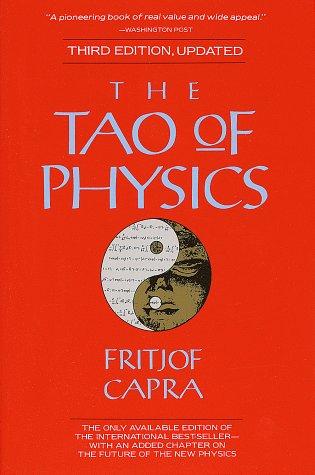
Has anyone read this?
I owned it since the 1990s and never got around to actually reading it.
I read it and thoroughly enjoyed it, also in the 90's as I recall.
I also read The Dancing Wu Li Masters, before Tao of Physics, and liked that more in some ways.
-
 1
1
-
-
7 hours ago, Apech said:By the way I’m with Eric Weinstein that string theory is one of the major blocks to progress.
I don't know enough to have an opinion but I must say I found string theory fascinating to read about on a superficial level.
-


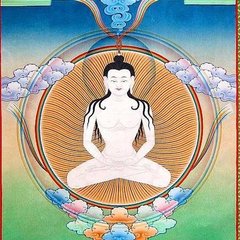
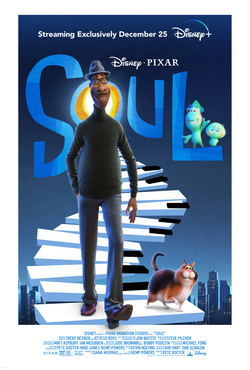
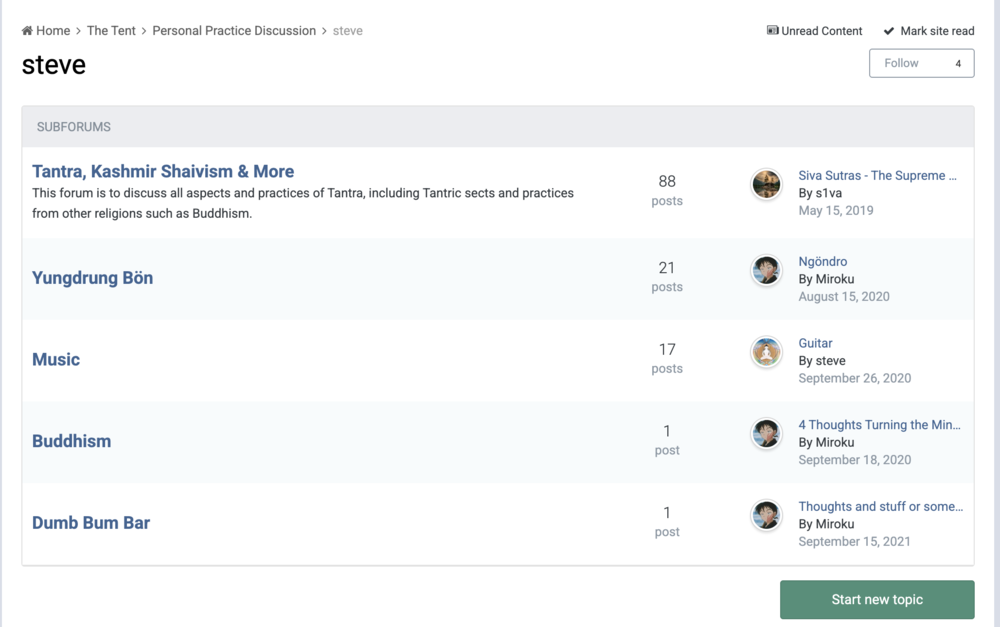
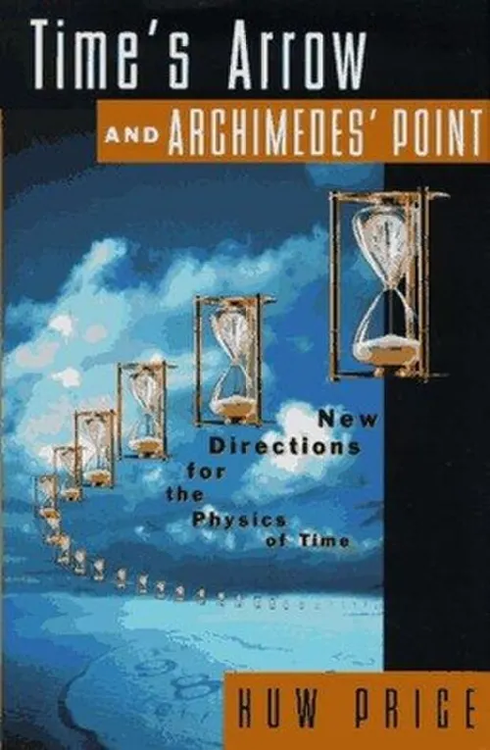

everything is perfect...?
in General Discussion
Posted · Edited by steve
The dzogchen path that I follow is one that is guilty of using such terminology.
Dzogchen literally means great (chen) perfection (dzog).
As Keith suggests, to the Western ear a more palatable and equally valid translation would be great completion.
In this context, perfect or complete does not imply a value judgement from the human perspective.
It is more a recognition of the spontaneous presence of all enlightened qualities in our natural mind, always present and awaiting discovery. It suggests that we don't need to add or subtract anything or change anything to have access to unlimited potential for enlightened activity. We simply need to be open and unimpeded by our tendency to "collapse the wave function" (to borrow some quantum mechanics language); by our tendency to over-identify with a limited sense of "me" that excludes so many possibilities. For me this has strong parallels in Daoism, a few examples being concepts like ziran and wuwei, as well as the idea that Heaven, Earth, and the sage not being humane/benevolent but regarding people as straw dogs.
In attending many dzogchen retreats over the past decade or so, this is one of the areas that causes the most consternation and frustration among developing practitioners. Of course there are many terrible things in the world, people suffer greatly and this is absolutely acknowledged in dzogchen and serves as the very basis and purpose for engaging in practice - namely, to liberate one's own being in order to benefit others. From the perspective of the samsaric being, the world can be a very tough, unforgiving, and dangerous place. From the absolute perspective, everything that arises is simply a function of the workings of karma and dependent origination. There is a sense of perfection or completeness in terms of the fact that if anything is changed, everything else changes. Nothing can be added or taken away or things would not be as they are. In this sense the whole is perfect and complete.
I wonder if there is a parallel in Hindu systems relative to the inherent perfection/completeness of Brahman relative to the incompleteness and imperfection of maya... or something like that?